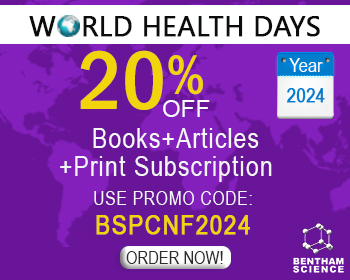Abstract
Receptor protein tyrosine kinases are usually activated upon binding their growth factors, or other suitable ligands, to their extracellular domains. These activated receptors initiate cytoplasmic signalling cascades which, when aberrant, can result in different disease states, such as oncogenic transformation. Many receptor protein tyrosine kinases use Src homology 2 domains (SH2) to couple growth factor activation with intracellular signalling pathways to mediate cell control and other biological events. The characterization of the components involved in these signal transduction pathways has resulted in the identification of new attractive targets for therapeutic intervention. Such is the case for the protein-protein interactions involving the SH2 domain of growth factor receptor bound protein 2 (Grb2). Agents that specifically disrupt Grb2-SH2 binding interactions involved in aberrant signalling could potentially shut down these oncogenic pathways and thus block human malignancies. This paper reviews the structural characteristics of the Grb2-SH2 domain and the approaches which have been used to identify antagonists of the Grb2-SH2 domain. Examples have been selected from our own research to illustrate how the unique structural features of the ligand-bound Grb2-SH2 have been exploited to design potent and selective Grb2-SH2 antagonists.
Current Pharmaceutical Design
Title: Structure-based Design of Compounds Inhibiting Grb2-SH2 Mediated Protein-protein Interactions in Signal Transduction Pathways
Volume: 6 Issue: 18
Author(s): H. Fretz, P. Furet, C. Garcia-Echeverria, J. Rahuel and J. Schoepfer
Affiliation:
Abstract: Receptor protein tyrosine kinases are usually activated upon binding their growth factors, or other suitable ligands, to their extracellular domains. These activated receptors initiate cytoplasmic signalling cascades which, when aberrant, can result in different disease states, such as oncogenic transformation. Many receptor protein tyrosine kinases use Src homology 2 domains (SH2) to couple growth factor activation with intracellular signalling pathways to mediate cell control and other biological events. The characterization of the components involved in these signal transduction pathways has resulted in the identification of new attractive targets for therapeutic intervention. Such is the case for the protein-protein interactions involving the SH2 domain of growth factor receptor bound protein 2 (Grb2). Agents that specifically disrupt Grb2-SH2 binding interactions involved in aberrant signalling could potentially shut down these oncogenic pathways and thus block human malignancies. This paper reviews the structural characteristics of the Grb2-SH2 domain and the approaches which have been used to identify antagonists of the Grb2-SH2 domain. Examples have been selected from our own research to illustrate how the unique structural features of the ligand-bound Grb2-SH2 have been exploited to design potent and selective Grb2-SH2 antagonists.
Export Options
About this article
Cite this article as:
Fretz H., Furet P., Garcia-Echeverria C., Rahuel J. and Schoepfer J., Structure-based Design of Compounds Inhibiting Grb2-SH2 Mediated Protein-protein Interactions in Signal Transduction Pathways, Current Pharmaceutical Design 2000; 6 (18) . https://dx.doi.org/10.2174/1381612003398546
| DOI https://dx.doi.org/10.2174/1381612003398546 |
Print ISSN 1381-6128 |
| Publisher Name Bentham Science Publisher |
Online ISSN 1873-4286 |
Call for Papers in Thematic Issues
"Tuberculosis Prevention, Diagnosis and Drug Discovery"
The Nobel Prize-winning discoveries of Mycobacterium tuberculosis and streptomycin have enabled an appropriate diagnosis and an effective treatment of tuberculosis (TB). Since then, many newer diagnosis methods and drugs have been saving millions of lives. Despite advances in the past, TB is still a leading cause of infectious disease mortality ...read more
Current Pharmaceutical challenges in the treatment and diagnosis of neurological dysfunctions
Neurological dysfunctions (MND, ALS, MS, PD, AD, HD, ALS, Autism, OCD etc..) present significant challenges in both diagnosis and treatment, often necessitating innovative approaches and therapeutic interventions. This thematic issue aims to explore the current pharmaceutical landscape surrounding neurological disorders, shedding light on the challenges faced by researchers, clinicians, and ...read more
Emerging and re-emerging diseases
Faced with a possible endemic situation of COVID-19, the world has experienced two important phenomena, the emergence of new infectious diseases and/or the resurgence of previously eradicated infectious diseases. Furthermore, the geographic distribution of such diseases has also undergone changes. This context, in turn, may have a strong relationship with ...read more
Melanoma and Non-Melanoma Skin Cancer Treatment: Standard of Care and Recent Advances
In this thematic issue, we aim to provide a standard of care of the diagnosis and treatment of melanoma and non-melanoma skin cancer. The editor will invite authors from different countries who will write review articles of melanoma and non-melanoma skin cancers. The Diagnosis, Staging, Surgical Treatment, Non-Surgical Treatment all ...read more
 12
12
- Author Guidelines
- Graphical Abstracts
- Fabricating and Stating False Information
- Research Misconduct
- Post Publication Discussions and Corrections
- Publishing Ethics and Rectitude
- Increase Visibility of Your Article
- Archiving Policies
- Peer Review Workflow
- Order Your Article Before Print
- Promote Your Article
- Manuscript Transfer Facility
- Editorial Policies
- Allegations from Whistleblowers
- Announcements























